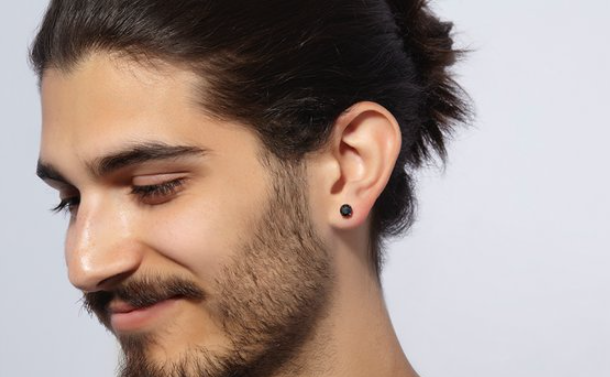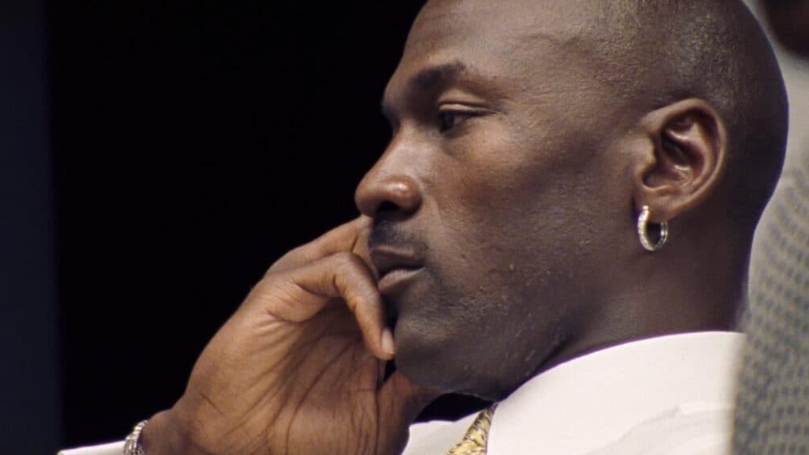For centuries, earrings have been an ornament worn by both men and women, to serve as a means of personal expression and a way to showcase Individuality.
However as time has passed, specific meanings and symbolisms have become linked to different earring placements.
One such connection revolves around the significance placed in wearing an earring In the left ear.
In this article, we will look at the potential significance of wearing an earring In the left ear and the various interpretations connected to this style choice.
Historical Context
Throughout history, ear piercing and adorning oneself with earrings has been going on for over a millennia, reaching back to ancient civilizations like the Egyptians.
In these societies, both men and women wore earrings, often as symbols representing their wealth, social standing, or religious devotion.
The specific choice of which ear to pierce and wear earrings at this time held less significance compared to the emphasis on this matter that came about later.
According to folktales and legends, pirates were actually the first people to be recorded wearing an earring on the left ear.
It was said that pirates would normally put on a left ear earring as a symbol that represented their daring maritime adventures and conquers.
A sailor would have the earring after a successful navigation through tough waters, like, for example, at the cape of South Africa.
Others would wear the earrings as they had a belief that the valuable metal in the earring could cover the cost of burial If a pirate’s remains washed up on foreign shores.
While this historical association may not hold true today, it has undeniably contributed to the perception that wearing an earring in the left ear carries nowadays.
Cultural Significance
The act of wearing an earring in the left ear has held diverse cultural meanings throughout history, reflecting on the crucial fabric of human societies.
Below, we take a look at the various cultural significances associated with beautifying the left ear with an earring.
Markers of status
In the past, people who were seen wearing earrings were often assumed to be individuals of a higher social standing.
This was mostly associated with members of the ruling class, with their earrings made from valuable materials like gold, silver, or precious gemstones.
With the left ear beautified with such luxurious jewelry, It was easy to identify a person with a high position in society during those times.
In ancient Rome, for example, wearing an earring In the left ear was viewed as a sign of a slave who had earned freedom.
There are still a few cases today, however, where some men still wear earrings to display their social status and influence.
Tribal identity
Wearing earrings is a tradition passed down from generation to generation within certain families and cultures.
Men used to wear earrings in their left ear to show respect to their ancestors while preserving their cultural identity.
These earrings are used to Involve different designs and look specific to a certain tribe, which serve as a physical symbol of their belonging and cultural heritage.
For example, among the Maasai people of East Africa, having an earring In the left ear represents membership to the Maasai tribe.
Similarly, males In ancient Egypt used earrings to Indicate their roles as priests for their tribe, while males in India continued to wear earrings as a marker of their order.
Age milestones
Ear piercing Is often a ritual that is used to represent the transition from childhood Into adulthood.
This tradition takes Into account the transformative journey of people as they mature and take on new responsibilities.
In many Latin American cultures, for example, a celebration for girls turning 15 often includes the wearing of a left earring as a symbol of their transition Into womanhood.
The choice of the left ear Is of cultural or religious importance, highlighting the importance of tradition and symbolism In these rites of passage.
Denoting warrior status or battle prowess
Over history, warriors and fighters have used earrings worn in the left ear to indicate their fighting power and achievements In battle.
The earring may be regarded as a badge of honor symbolizing courage, that enables fellow fighters to recognize their experiences and achievements on the battlefield.
Various types of earrings worn In the left ear were also used to represent the various ranks or accomplishments among warriors, traced back to different historical periods and cultures.
For example, in ancient Greece, It was believed that a warrior who had slain an opponent in battle would proudly wear the earring of the fallen enemy in his left ear as a trophy.

The Gay Code Theory
The “Gay Code Theory” is a widely unsubstantiated urban legend that gained a lot of popularity in the late 20th century.
It suggested that gay men made their sexual orientation known through specific fashion choices and accessories, particularly focusing on which ear an earring would be placed.
There was a common belief that gay men liked to pierce their right ear, leading to a saying that “left is right and right is wrong” by the mid-1980s
The few straight men who chose to wear an earring were typically performers, gang members, or individuals who were less concerned about potential harassment.
Fortunately, as society became more accepting of homosexuality, the significance of wearing an earring in a specific ear began to go down.
Pride parades, political advocacy for gay rights, and the legalization of gay marriage in several U.S. states all contributed to greater acceptance of LGBTQ+ individuals.
As a result, the need for a code to signal potential romantic interests became less relevant, and the fear of being perceived as gay by straight men diminished.
It’s crucial to understand, however, that the Gay Code Theory was primarily based on stereotypes and urban legends.
There is no universal or standardized code within the LGBTQ+ community for indicating or communicating sexual orientation or interests.
Fashion and Personal Expression
The practice of ear-piercing has gone through a lot of changes, moving away from Its historical and symbolic origins to primarily become a matter of personal style.
This shift involves a departure from traditional representations and cultural importance In favor of fashion, self-expression, and personal preference.
In today’s society, ear piercing Is mostly seen as a way of expressing yourself while at the same time making a fashion statement.
As earrings come In different ranges of designs, materials, and sizes, people can be able to tailor their appearances in a way that reflects their distinct tastes and personalities.
While earrings historically held symbolic meanings, many individuals in recent years no longer follow these conventional Interpretations.
Instead, they see ear-piercing as a way to move away from rigid symbolism and embrace their personal ideas of beauty and style
The change represents a broader trend In which people are redefining cultural norms and reclaiming practices for their own purposes.
People can now willingly choose to get their ears pierced, often making well-informed decisions about the procedure and their choice of jewelry.
This sense of control over your body and appearance appreciates the fact that personal style choices are a matter of Individual freedom.
Health Beliefs
Acupuncture and acupressure experts have through studies identified particular points in the body where It is possible to stimulate or rebalance the flow of the body’s vital energy.
They achieve this by either applying pressure or inserting fine needles at specific points, with the goal of restoring energy flow and potentially avoiding health issues.
The ear has been identified to be an organ that serves as a representation of the whole body, with specific ear points being thought to be the same as various organs.
Therefore, much like acupuncture and acupressure, which pinpoint precise body points to enhance healing, ear piercing Is viewed as a continuous stimulation of these ear points.
The act of piercing itself is believed to exert pressure on these points, potentially Influencing the energy flow in the corresponding body parts.
Left ear piercing, on the one hand, offers certain therapeutic advantages when compared to piercing the right ear or other body areas.
This belief Is based on the idea that the left side of the body is linked to a part of the nervous system, which is associated with relaxation and healing.
The idea used In this theory intends to maintain a balance and promote well-being within the body.
You can help the body In getting a proper balance and addressing various physical or emotional issues by piercing specific points on the left ear.
However, It’s important to note that these claims lack scientific backing and if you are considering doing it, you should be cautious and consult healthcare professionals.
Conclusion
From personal expression, and fashion, to cultural and spiritual connotations, various Individuals choose to beautify their left ear with earrings for a number of reasons
While some reasons may find their origins in longstanding traditions, others would be Influenced by modern pop culture and current fashion trends.
Regardless of your motivation, wearing earrings In the left ear serves as a means of expressing oneself, enabling people to exhibit their uniqueness and style.
In the end, the most important aspect Is going for what relates to your personal preferences and comfort.



